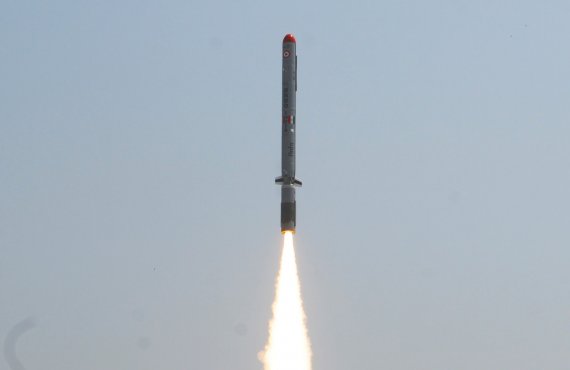India successfully test-fired its first domestically built nuclear-capable long-range cruise missile Friday, marking another step in building up the country´s defence prowess.
The “Nirbhay”, or “fearless”, missile blasted off from a mobile launcher at the Integrated Missile Test Range in Chandipur in the eastern state of Orissa, the Press Trust of India reported.
“The trial was totally successful,” a senior government official associated with the launch told the Press Trust of India national news agency.
“The outcome of the trial was ascertained by analyzing the data retrieved from radars and telemetry points,” the official said, speaking on condition of anonymity.
Unlike other ballistic missiles, Nirbhay has a wing and tail fins. The missile is intended to cruise like an aircraft, helped by its small fins, and can be launched from land, sea and air.
The surface-to-surface missile is fitted with a turbojet engine and is capable of flying at low altitudes to avoid detection. It can even hover near the target, striking from any direction without being seen on radar.
With a range of up to 1,000 kilometers (600 miles), it gives India the capability to strike “deep into enemy territory”, NDTV news network reported.
The Nirbhay is regarded by military experts as India´s version of the US Tomahawk cruise missiles.
Friday´s success comes after the subsonic missile´s first test launch in March 2013 had to be aborted midway after it veered off course.
India, which shares borders with arch-rivals Pakistan and giant China, both of which are nuclear-armed, is developing the missile system to strengthen its air-defence capabilities.
India already has in its arsenal the supersonic BrahMos missile which it developed jointly with Russia.
India in 2012 successfully launched its nuclear-capable Agni V ballistic missile with a range of more than 5,000 kilometers.
The Indian military views the Agni V missile as a key boost to its regional power aspirations and one that narrows — albeit slightly — its huge gap with China´s technologically advanced missile systems.
While the shorter-range Agni I and II were mainly developed with India´s traditional rival Pakistan in mind, later versions with longer range reflect the shift in India´s military focus towards China.
Just last month, Indian government scientists were in the news for winning Asia´s race to Mars when its unmanned Mangalyaan spacecraft successfully entered the Red Planet´s orbit after a 10-month journey on a tiny budget.










